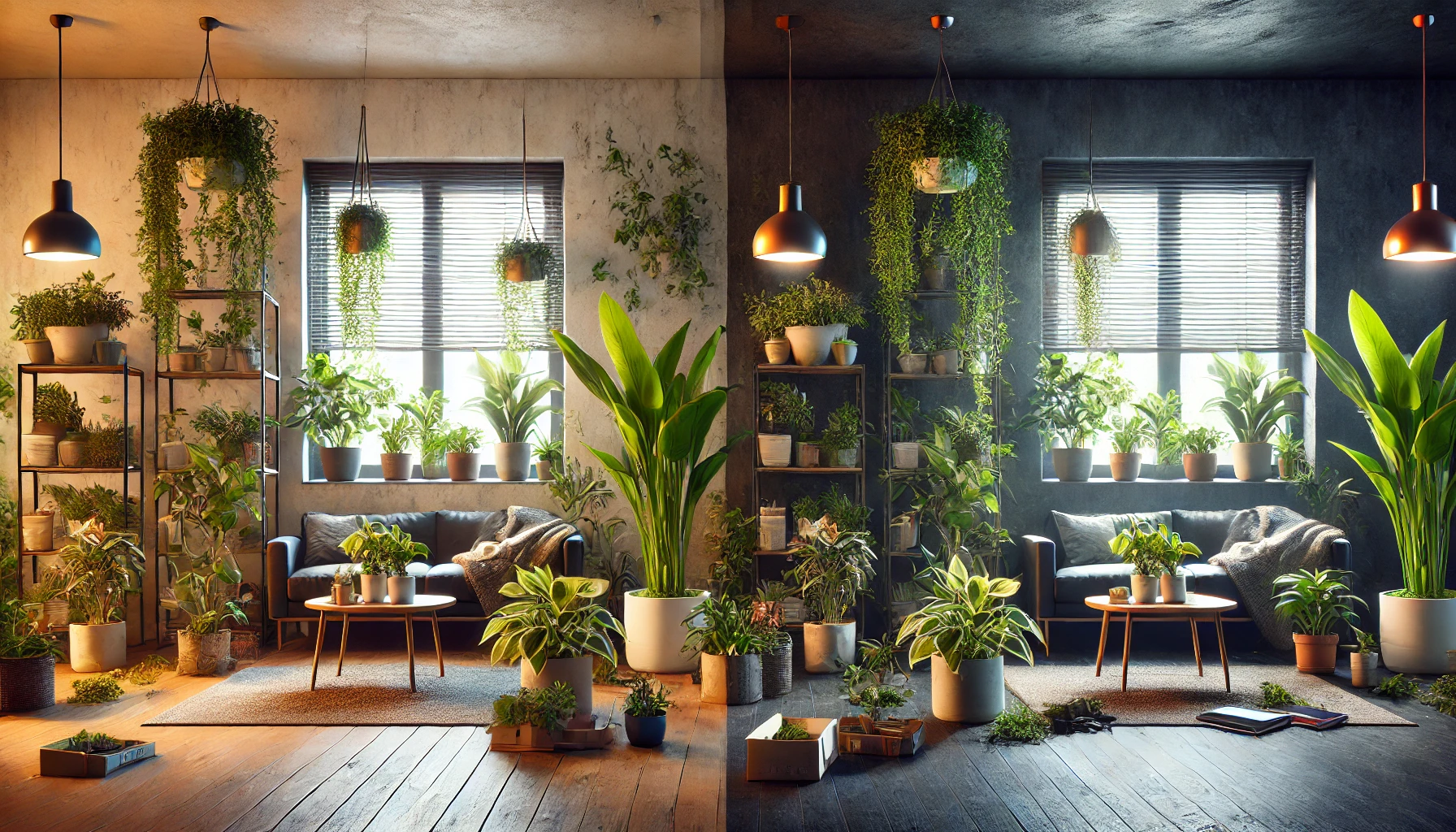Bringing houseplants into your home is exciting — they brighten up your space, purify the air, and add a calming touch of nature. But for many people, what starts as a happy plant journey ends in frustration when leaves yellow, growth stalls, or worse… the plant dies.
The good news? Most plant problems come down to a few very common mistakes, and once you know how to avoid them, your green companions will thrive.
Let’s dive into the top houseplant mistakes and how you can fix them for good.
1. Overwatering
By far the most frequent mistake, overwatering often happens with good intentions. People think plants need water on a fixed schedule — but that’s not how nature works.
Why it’s a problem:
- Saturated soil suffocates roots
- Leads to root rot, a plant killer
- Encourages fungus and pests
What to do instead:
- Always check soil moisture before watering (finger test or moisture meter)
- Allow the top few inches to dry out
- Use pots with drainage holes
- Don’t let plants sit in water-filled saucers
Remember: it’s better to underwater than overwater most indoor plants.
2. Not Enough Light
Many people underestimate how much light a plant actually needs. Just because you can read a book in the room doesn’t mean there’s enough light for photosynthesis.
Symptoms of low light:
- Leggy, stretched stems
- Small, pale leaves
- Slow or no growth
- Leaf drop
How to fix it:
- Move your plant closer to a window with indirect sunlight
- Choose light-tolerant varieties for darker rooms (ZZ plant, snake plant, pothos)
- Use grow lights if natural light is limited
Each plant has unique light needs — research them before choosing a spot.
3. Using the Wrong Soil
Not all soil is created equal. Using the wrong kind can cause drainage issues, nutrient deficiency, or poor aeration.
Examples:
- Cacti and succulents need fast-draining soil
- Tropical plants like philodendrons prefer rich, well-aerated mix
- Orchids need bark-based mixes for airflow
Fix it by:
- Buying or mixing soil designed for your specific plant type
- Avoiding garden soil, which is too dense and can harbor pests
- Refreshing soil once a year to replenish nutrients
4. Ignoring Pot Size and Drainage
Plants need space to grow, and containers without drainage are a fast track to root rot.
Common issues:
- Root-bound plants stop growing and dry out quickly
- Water builds up in pots with no drainage holes
- Small pots can’t support larger or fast-growing plants
What to do:
- Repot plants every 1–2 years or when roots outgrow their container
- Always use pots with proper drainage
- Choose a pot only 1–2 inches larger in diameter than the previous one
5. Placing Plants in Drafty or Hot Areas
Sudden temperature changes can shock plants. Radiators, air conditioners, and drafty windows can all be problematic.
Symptoms of temperature stress:
- Leaf curling or browning
- Sudden leaf drop
- Wilting despite moist soil
Tips:
- Avoid placing plants near heat vents, radiators, or cold drafts
- Keep room temperature consistent (65–75°F / 18–24°C)
- Watch for temperature swings between day and night
6. Fertilizing Too Much (or Not at All)
Fertilizer helps plants grow — but too much can burn roots, and none at all can starve them of nutrients over time.
Signs of over-fertilizing:
- Brown, crispy leaf edges
- White crust on soil surface
- Weak, leggy growth
Healthy fertilizing habits:
- Use a diluted, balanced fertilizer during spring and summer
- Avoid feeding in fall and winter
- Fertilize no more than once a month unless otherwise needed
7. Not Cleaning the Leaves
Dust accumulates on leaves, especially large ones, and blocks sunlight. This reduces photosynthesis and invites pests.
Fix it easily:
- Wipe leaves with a soft damp cloth every few weeks
- For small plants, rinse them gently in the sink or shower
- Don’t use leaf shine products unless plant-safe
Clean plants are happy plants — and they look better, too!
8. Moving Plants Too Often
Plants take time to adjust to a new location. Constantly changing their position can stress them out and delay growth.
Instead:
- Observe a plant for a week before deciding to move it
- Rotate it slightly each week for even light exposure
- Only relocate when you notice real issues (e.g., not enough light)
Let your plant settle in. Stability helps it thrive.
9. Not Paying Attention to Humidity
Indoor air — especially during winter — can be too dry for tropical plants.
Symptoms of low humidity:
- Crispy leaf edges
- Brown tips
- Leaves curling or folding
Solutions:
- Mist leaves lightly (only for plants that enjoy it)
- Use a pebble tray with water under the pot
- Place plants together to create a microclimate
- Invest in a small humidifier
10. Ignoring the Signs
Your plant is constantly sending messages — through its leaves, posture, and color. Ignoring those signs can turn a small issue into a big one.
Be aware of:
- Sudden yellowing (watering issue?)
- Spots or speckles (pests?)
- Drooping or wilting (light, water, or root problem?)
Best tip: Make it a habit to check your plants for 1–2 minutes every day. That short moment helps you connect, observe, and respond in time.
Final Thoughts: Learn from Every Leaf
No one gets it perfect from the start — not even seasoned plant lovers. Mistakes are a part of the journey, and every plant teaches you something new about nature, care, and patience.
By avoiding these common pitfalls and tuning in to your plant’s needs, you’ll gain confidence and build a thriving indoor garden that brings joy and beauty into your everyday life.
And remember: even if a plant doesn’t make it, the experience helps you grow as a plant parent.
